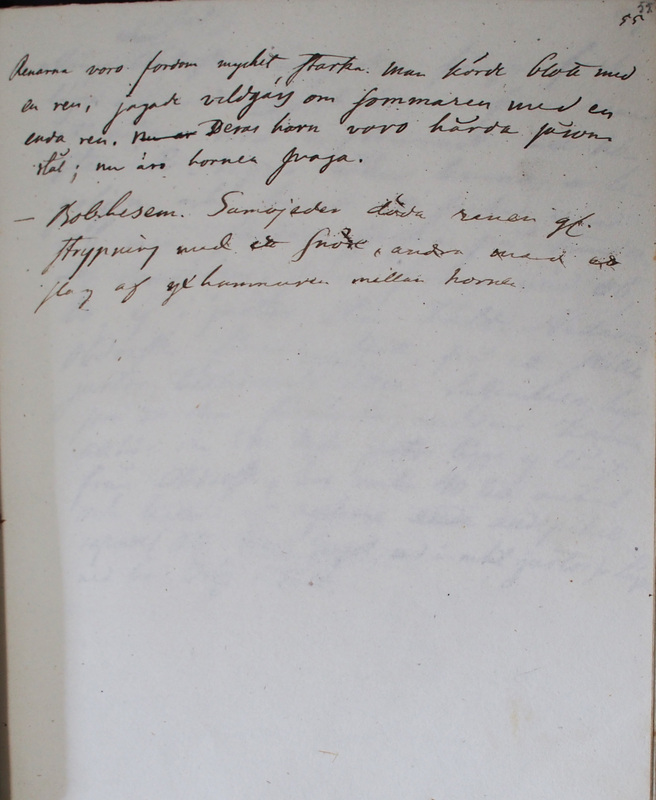Ethnographiska, historiska och statistiska anmärkningar. 055
Title
Ethnographiska, historiska och statistiska anmärkningar. 055
Description
|
Renarna
voro fordom mycket starka. Man körde blott med This seems to be a quotation from someone, and as such a rare example of inscription in the notebook that otherwise tends to present archival materials or data based on Castrén’s observations. The quotation most probably reflects the days when the Nenets were small-scale reindeer herders or “reindeer-moved hunters and fishermen on the tundra and forest tundra”, as Krupnik (1993: 163) describes the situation before large-scale reindeer herding developed in the course of the 18th century. There is agreement that before that reindeer were used mostly for transportation, whereas the meat and skins were obtained by hunting wild reindeer, other game, wild fowl, and sea mammals. Additionally, only one or two reindeer per sledge were used, whereas the number of draught animals increased in the course of the development of the herd sizes. (See also Stammler 2005: 46–49)
en ren, jagade vildgäss om sommaren med en enda ren. Deras horn voro hårda såsom stål; nu äro hornen svaga. Bolshesem[elska]. Samojeder döda renen gl.[genom] strypining med ett snöre, andra med ett slag af yxhammaren mellan hornen. |
The reindeer were very strong in the past. You drove with just one reindeer, hunted wild geese in the summer with only one reindeer. Their antlers were hard as steel; now they are weak. The Bolshezemel'skaja Samoyeds kill reindeer by strangling them with one string, others with one stroke of the back of an axe between the antlers. |

